 The Aquarium Guide" />
The Aquarium Guide" />  The Aquarium Guide" />
The Aquarium Guide" />
Crayfish is also popularly known as Mudbugs, Crawfish, or Crawdaddies, these crustaceans are found in freshwater. There are a few species that are found in saltwater and brackish waters. Crayfish is related to the lobster family. Crayfish is colorful and a delight to watch. Are you planning to keep them as your pet? Wondering, how long do Crayfish live? It is an obvious question that is bound to pop up in your head before getting crayfish home as your pet pal. We will answer some of your concerns regarding Crayfish and get you prepared for taking good care of it.
As you might already be aware that there is a variety of Crayfish available, their life span depends on the type of Crayfish you bring home. There are more than 500 species and more than half of this is found in North America. Freshwater Crayfish makes for a good pet if you are looking for an exciting and interesting pet. You can easily look after them and you will be surprised how often they interact with you. Crayfish is perfect for a tank that only houses them and is not meant for a community tank. A dedicated tank for crayfish will let you enjoy all their antics.
Before choosing a Crayfish you should be well aware of the different species. Mostly Crayfish require cool water but there are a few that require warmer water to survive well. Doing some research before making the purchase can be helpful to know how to look after Crayfish and support their growth. A crayfish can live up to 2 to 3 years if you take good care of it and there are a few like the Tasmanian giant that can live as long as 40 years. Look after Crayfish well and test your luck with their lifespan, maybe you will be able to enjoy their company for a longer time.
Table of Contents
Crayfish, also known as freshwater lobsters, typically live for 3-5 years in the wild. In captivity, with proper care, they can live for up to 10 years. Factors such as water quality, diet, and size of the enclosure can impact the lifespan of crayfish.
As mentioned earlier, there are many types of Crayfish found naturally in freshwater and a few that grow in saltwater. Learn more about the different types of Crayfish and find the best one that suits you. These are just a few popular ones that can usually survive in captivity. Read along to find out more about Crayfish.
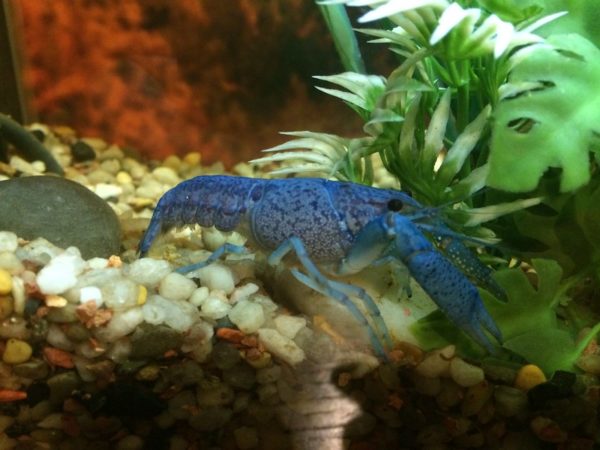
Electric Blue Crayfish ( Procambarus alleni ) can survive in captivity for around 5 to 6 years and even during the day they can remain active.
They have a beautiful color and fully grown Electric Blue Crayfish can measure around 10 to 12cm (4 – 5 inches)
Most of the Crayfish species are loners and naturally so, the Electric Blue Crayfish is a loner as well. They like to be alone and do not like being grouped with others. Electric Blue Crayfish is not social. As they grow and age, they often become aggressive. This likely turn them into fighter cocks and they are very likely to fight with other species or with their own.
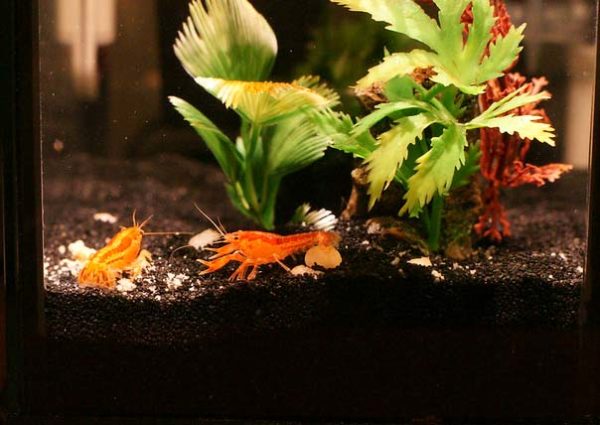
Dwarf Crayfish species (Cambarellus species ) usually live up to 2 years in captivity. Looking for a small hardy addition for your tank? These ones can be perfect. Dwarf Crayfish is really small measuring about 5 cm ( 2inches) lengthwise. The ideal housing ratio for Dwarf Crayfish species is, for every 40 liters or 10 gallons of water house 2 to 3 Crayfish.
These tiny crustaceans stay well with other tank fellows because usually, they do not pose a threat to others thanks to their small size. Saying that you should be aware of the fact that Dwarf Crayfish is known to go behind Dwarf Shrimp and sometimes even small snails. Do you have these two in your tank already? You have been warned.
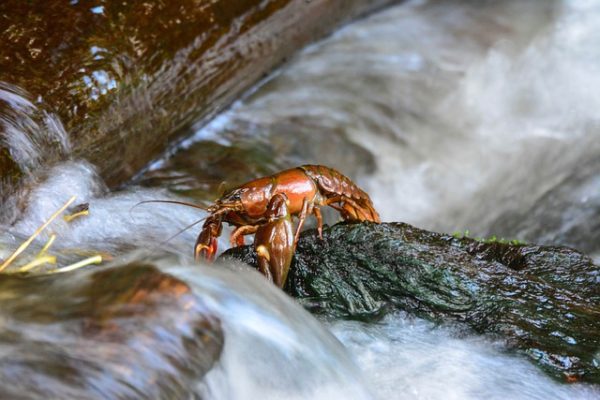
Yabbies or Cherax destructors can live around 8years under the best aquarium conditions, although they can live around 3 to 5 years on average.
Yabbies grow quite big in size when in comparison to other Crayfish species. Their carapace can become as big as 20cms ( 8inches) and sometimes even more. Be mindful of this if you want to bring them home as your pet.
Yabbies are known to be natural diggers. When they are in the open and natural habitat, they can dig tunnels as deep as 6ft (2 meters). Another important thing to know about Yabbies is that they are naturally territorial and aggressive.
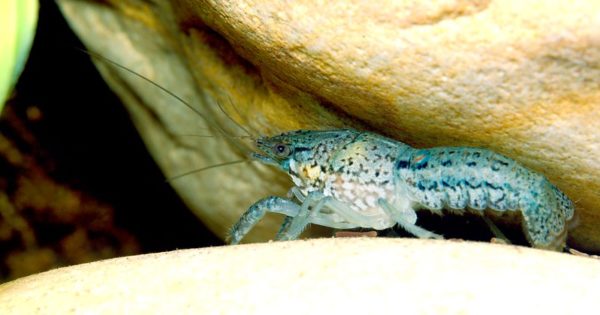
Marbled Crayfish or Procambarus virginalis relatively have a shorter life. They tend to live only for 2 to 3 years. They can grow around 7 to 12 cms ( 3-5inches) long.
Marbled Crayfish has a nickname, Self-cloning Crayfish. As all the Marbled Crayfish are genetically identical, they get this nickname. They are unique in their own way. Marbled Crayfish is one of the most popular choices of a pet in North America and Europe.
Another unique characteristic of Marbled Crayfish is they don’t need to mate to breed! Only one is required to overpopulate your aquarium at home in a short period.
Marbled Crayfish is quite an interesting type of Crayfish but because of its invasion potential, many European countries and states in the US have banned or put restrictions on this species. Learn about your state’s laws before bringing Marbled Crayfish home.
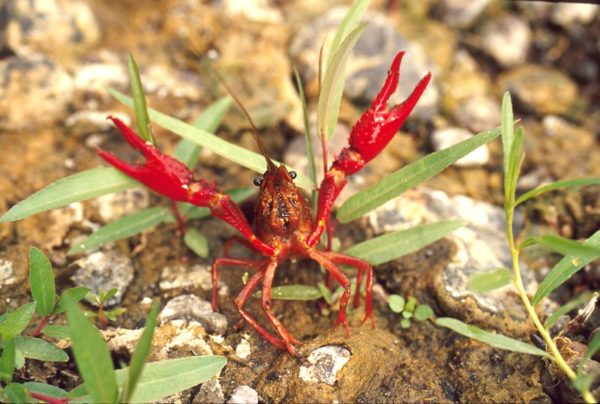
Red Swamp Crayfish or Procarambus Clarkii, in captivity, can have a lifespan of around 5 years provided they get appropriate aquarium conditions. They usually live for not more than 3 to 4 years on average.
A full-grown Red Swamp Crayfish can be 7 to 10 cm (3-4 inches) long. Few also report that few Red Swamp Crayfish when in the wild can grow as long as 12cm that is 5 inches.
Red Swamp Crayfish is one of the many other popular Crayfish and is easily available for the people who enjoy keeping them as pets. There is a reason for its popularity, this species is not demanding, hardy, and adapts well. Red Swamp Crayfish is popular for being low-maintenance, new aquarists, as well as veterans, have enjoyed their company.
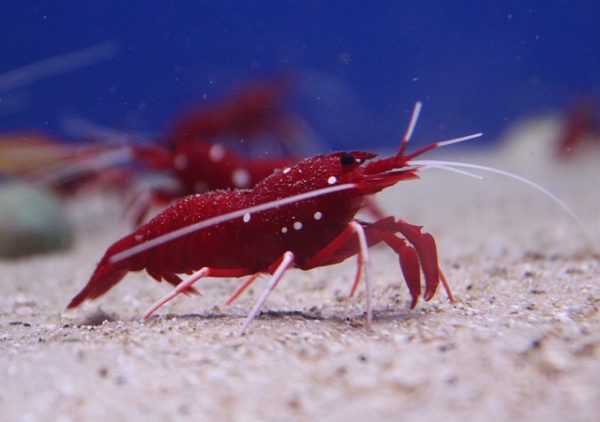
Red Claw Crayfish also called Cherax quadricarinatus live for around 4 to 5 years but under the most favorable conditions in the aquarium can live for 6 years.
This species grows really fast. They can grow 35 cms long (13 inches) with maximum weight for male Red Claw Crayfish going up to 1.1 lbs( 500gms) and for female Crayfish going up to 0.9lbs (400gms).
The Red Claw Crayfish globally holds the second position for the most cosmopolitan crayfish species only after Red Swamp Crayfish.
This one also adapts well, doesn’t demand much, and is a hardy species.
Tasmanian Crayfish or Astacosis gouldi is a popular species. There is a correlation between lifespan and the body size of any animal, likewise, Crayfish that are bigger in size tend to live longer than others. It can live up to 40 years. Between the age of 30 to 35, they reach their full size.
Some of these Tasmanian Crayfish can measure as long as 80cms (30 inches) and weigh up to 6 kgs or 13Lb. That is impressive for any Crayfish species, hence the Tasmanian giant stands as a lone winner.
These were some of the types of Crayfish that you can think about for your home aquarium.
As mentioned earlier, the life expectancy of Crayfish depends on its species. However, on average the life expectancy of crayfish is around 2 to 5 years and sometimes even more. There are a few like the Tasmanian giant that is known to live up to 40 years. Under favorable conditions in the tank, Crayfish can live around 2 to 5 years depending on what species you bring home as a pet.
Life expectancy depends on the species of Crayfish as well as how the conditions of the tank are.
Taking care of Crayfish is most important if you wish to have your Crayfish around for a longer time. Here are some things you should know about to take good care of Crayfish to support their natural lifespan.
If you have a single Crayfish, you can easily keep it in a small aquarium. An aquarium that can hold 5 to 10 gallons of water will be sufficient if you can change the water at regular intervals. Crayfish are also known to be messy eaters along with having a reputation for hiding their food in corners or caves. This can result in a drop in the water quality of the tank. Make sure you check hidden spots for food while changing the tank water.
If you have more than a single Crayfish, you will require 20 gallons of water in a tank. By nature, Crayfish are cannibalistic. A crayfish while it is moulting is almost defenseless till the time the shell doesn’t become hard again. While this is happening, Crayfish might disappear for a few days or almost up to a week. Crayfish can hide away while moulting. This is why it is important to give a lot of hiding places for your Crayfish in the aquarium or else crayfish can become somebody else’s meal in the tank.
It is much of a hassle when you house a Crayfish with other fish. It is most likely to end up badly. There are certainly a few people who have been successful with it but the majority time it will end up in one of the either being eaten. It is terrible to lose an expensive and large fish to Crayfish or find parts of Crayfish floating over the aquarium over the night. One can always try housing Crayfish with fish but it won’t end up well given due time.
There should be a Hang-on-Back (HOB) filter for Crayfish tanks. Even though a sponge filter is less expensive than a HOB filter, the line for air that goes out of the tank can give Crayfish a perfect escape. Leave your Crayfish alone for a long time and you will find your Crayfish pacing around your fish room floor.
Crayfish should have Shrimp Pellets that sink as their main diet. Crayfish also enjoy frozen foods and green vegetables in their diet. They are not fussy about the green vegetables, you can give them cabbage leaves, shelled peas, and zucchini medallions. As far as frozen food is concerned, give them small quantities of daphnia, brine shrimp, daphnia, or frozen fish and they will be happy.
Be warned, aquatic plants are a favorite for Crayfish and if you have any in the tank that they are housed in, it will be a matter of days before Crayfish eats it all. Be it a single aquatic plant or an aquarium full of plants. Be cautious to not put any plants in the aquarium that cannot be replaced.
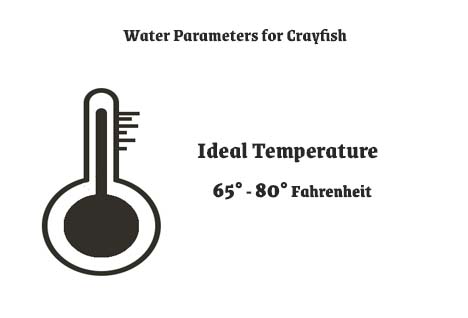
Aquarium pets need care and love along with the right water parameters. Wrong parameters can cause untimely death for your aquatic pet in this situation a Crayfish. Knowing the ideal water parameters for Crayfish is highly important and so is knowing how to maintain it.
There are three important chemical compounds, Nitrate, Ammonia, and Nitrite that need to be maintained in an ideal range. The ideal range for these three is close to 0 ppm. These three compounds are important for and related to cycling. Ammonia and Nitrite can be lethal for any living organism. Nitrate can also be harmful and in large amounts can be lethal.
The ideal water temperature for the Crayfish tank is 65 to 80 degrees Fahrenheit or 19 to 27 degrees Celcius.
Another parameter is the pH (Potential of Hydrogen) level of the water. The pH scale starts from 0 and ends at 14, where 0 indicates that the water is highly acidic and 14 indicates the water is highly alkaline. Naturally, 7 indicates the water is neutral.
The ideal pH level for the Crayfish water tank is 6.5 to 7.5.
The other parameters include GH and KH level which is essentially the level of Magnesium and Calcium in water and Carbonate hardness of water respectively. The ideal range for GH is 4-10ppm and KH is 3 to 10 ppm.
Another less important parameter is the TDS (Total Dissolved Solids). This level should be between 100 to 300 ppm.
Crayfish need more space and water. You can start with a tank that can hold 20 gallons of water. If you want to bring home a bigger Crayfish, you will require a bigger tank. Make sure the tank you have, has enough floor space for the Crayfish to move around freely. The tank size should be large enough for Crayfish to climb, hide and explore. They need a lot of space to move around.
Crayfish do not make good tank mates with other tropical community fish. Oftentimes, aquarium Crayfish become very territorial and also aggressive as mentioned earlier. Crayfish don’t pair well with other community tank mates like black mollies, Corys, or swordtails. Even freshwater shrimp species cannot be paired with Crayfish. Crayfish are loners, so they don’t pair well with other Crayfish either.
There are very few tank mates for the aggressive and always hungry Crayfish like giant danios, hatchet fish, furcata rainbow fish, and zebra danios. These stay in the middle or upper levels of the tank, fish that stay at the bottom level of the tank don’t make good tank mates for Crayfish. They will most likely be eaten by Crayfish.
Crayfish can breed at any time in the tank. If you want to induce a breeding behavior, keep the water pristine and feed good quality food to Crayfish. It can be frustrating to breed Crayfish who are new to them. One easy way to do it is to look at the swimmerets. The males have swimmerets extended past the legs at the back. Females do not have it past the hind legs.
When mating starts, the male will lay a sack of sperm on the female and the female will release her eggs that will pass through to sperm for it to fertilize. After fertilization, the female keeps the eggs under her tail. At this point, she should be kept separately in a tank by herself.
It will take around 4 weeks for the eggs to hatch and Crayfish offsprings will emerge. For a short period of time, the female will look after them but should be removed soon after to avoid them being eaten by her.
You will require a large tank for the fry of Crayfish if you wish that a few survive as they are cannibalistic and will end up eating each other. You can feed them blanched cabbage leaves or leaves of lettuce while they are growing. They can also be fed detritus in the aquarium. Make sure to remove the large Crayfish from the tank to avoid the smaller ones being eaten by the larger Crayfish.
Crayfish often die because of poor water parameters. Correct water parameters are essential for maintaining the health of Crayfish. As you know, Crayfish are quite aggressive and cannibalistic they can eat another smaller Crayfish if kept together in the same tank. This can also be a reason why your Crayfish may die.
Other reasons include lack of oxygen in the tank, an uncycled tank, or a toxic tank, and another obvious reason is age. A Crayfish that is nearing its lifespan will die no matter what you do.
Crayfish can go out of water when there is a lack of oxygen in the tank. It is a natural tendency for Crayfish to go out of water when they are out in the wild, to explore or look for more food. But when in captivity, they do it to deal with the lack of oxygen in the tank. This is why air pumps are kept on 24/7 in a Crayfish aquarium.
Wondering how to maintain or increase the level of oxygen in the Crayfish tank? Here is how you can do it as oxygen is extremely important for Crayfish. There are two ways to get more oxygen into the water. One is by using an air pump and the second one is to increase the surface agitation.
We all know how air pumps work. Increasing the surface agitation can be done with a powerhead or wavemakers. This allows oxygen to get dissolved in the tank water.
Crayfish have a special breathing mechanism. Crayfishes have gills that are quite unique and special unlike those of fish. They can not only breathe oxygen from the water with the help of these special gills but they can absorb oxygen from the air as well.
To perform this task of absorbing oxygen from the air, the Crayfish need to keep their gills moist. This is why you will see Crayfish spending months out of the water without any issue in mushy and humid areas.
A few tips for their long life include paying attention to their stress levels, avoiding taking them out of the water just because you can. Other stressors include molting stress, make sure to give them enough room to hide to deal with molting and the stress. They become vulnerable while their new shells become hard so they need a place to hide and their chance to survive increases.
Check the water parameters to make sure the tank is cycled well. High levels of ammonia and nitrates can be fatal for Crayfish.
You can also feed Crayfish a proper diet and calcium supplements to increase their lifespan. These scavengers do need a good mix of vegetation and meat to grow. Calcium supplements help them build solid and strong shells.
You should avoid foods that have copper as it can be toxic for crustaceans. Feeding food, plant fertilizers, or medication that has copper can have adverse effects on Crayfish.
Another tip to lengthen their life is to use lids on the tanks. Crayfish is notorious for escaping tanks. They can fall and injure or break their shells. Their gills can dry out in the open making it difficult to absorb oxygen from the air. Though, if the climate is humid they can survive out of water for a few days. Keeping the tank covered with a lid can prevent Crayfish from escaping.
If you are planning to keep more than one Crayfish in the tank, try to introduce all of them together to the tank to avoid the first one attacking the newer Crayfish. This aggression stress can decrease the lifespan of a Crayfish. Provide enough places for Crayfish to hide to deal with this stress.
Though the longest living Crayfish is the Tasmanian giant that lives for 40 years, the general lifespan of an average Crayfish species in captivity is around 2-5 years. To support their natural lifespan, make sure you regularly check their water parameters as well as feed a proper diet of vegetables, shrimp pellets, and algae wafers. Ideally, you should give them a lot of hiding places for molting.
Crayfish is hardy and beautiful to look at. Make sure you look after them to enjoy their company and their antics for a longer time.